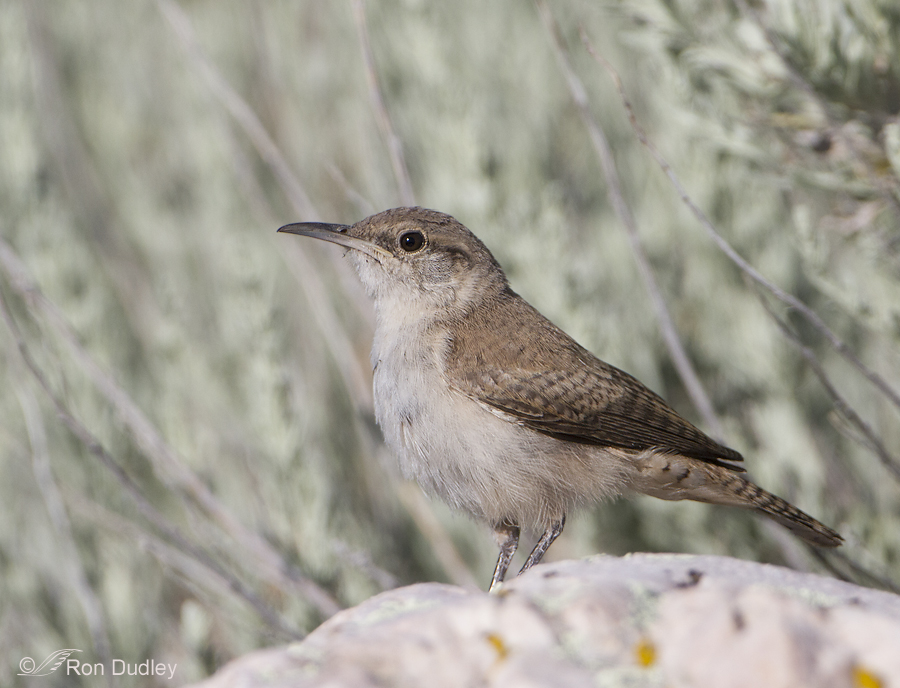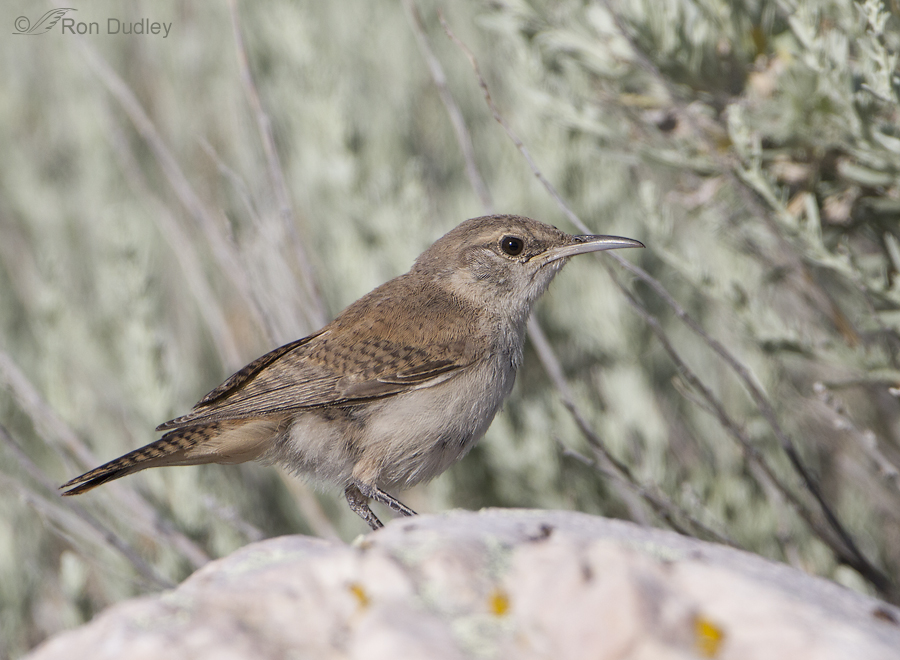I’ll be the first to admit that I’m not particularly skilled in identifying some of the songbirds. This wren is a case in point. I’m unsure if it’s a Rock Wren or a House Wren.
1/4000, f/6.3, ISO 500, 500 f/4, 1.4 tc, natural light
These two images were taken June 21, 2013 on Antelope Island. The bird was in classic Rock Wren habitat – lots of jumbled rocks. But as far as I can tell it could be a House Wren – both species are found in my area.
1/3200, f/6.3, ISO 500, 500 f/4, 1.4 tc, natural light
Another view that shows the tail and back a little better.
I like the photos well enough to keep them despite the hidden feet but I don’t know where to put them in my organizer. And I hate the “Unknown ID” category.
So, a little help from my friends?…
Ron
Note: I’m on the road again for a few days and I’ll have no computer access so I won’t be able to respond to any comments in a timely fashion, though I do enjoy reading those comments in the email notifications I get on my phone.




I don’t know what kind of wren it is either, but I do know that your shots are absolutely incredible!
Charlotte
Rock Wrem. it is the right habitst, color, size. House wren would be more brown than drab gray and the brown Wrens … Bewick’s, House, Carolina, Winter/Pacific … all have tail in the air most of the time I’ve viewed them.
Thanks for the photos, Ron … as always a delight with plenty of new info and insights that. I enjoy as a birder!
cheers
dawna
San Francisco
I like it and enjoying the conversation, too.
I agree a Rock Wren, and I suggest a juvenile. BNA says, “Juveniles resemble adults but are duller (and often darker) with greater wing-coverts tipped buff, and little or no streaking or spotting on the underparts (Pyle 1997). ”
Impeccable photos, as always.
/WC
Great images of the wren! Can’t argue with Dick’s i.d. of Rock Wren.
I agree with Dick Harlow as to the ID of this bird. What is confusing is the total lack of coloration/spotting on the breast. Bill is definitely too long for a house wren. I’ll send you a photo of a rock wren that I took at Hueco Tanks – it looks a lot different from this one. But apart from the spotting, yours matches the picture in my eastern bird guide (sorry, I’m on the Outer Banks and don’t have any of my western books with me). Despite the missing feet, these are beautiful photos.
Remember these great words of wisdom (mine)…pictures don’t always have to be perfect to be perfect……If this was a picture of a House wren, it would automatically be perfect because there is no sound.
Ron, this isn’t either one (House or Rock Wren). It’s a great shot of the very rare Footloose Wren. They are called this because sometimes their feet get so loose they just fall off, as is obviously the case with this bird…so, of course you didn’t get the feet…he doesn’t have any. Our House wrens are easily ID’d by their upright tails and their liquid song, which they repeat, and repeat and repeat and……..
I would call this a classic Rock Wren.
1. Size, too large to be a House Wren. House Wren is under 5″, whereas a Rock Wren is about 6″. An inch and a quarter length in a bird is a big difference.
2. Bill, longer than what I see in a House Wren.
3. Color, just doesn’t fit a House Wren in my opinion.
4. In many instances when I see a House Wren the tail is cocked up, not always, but is certainly a characteristic of House Wrens.
Although House Wrens have a longer tail than Winter Wren, it is still short compared to a Rock Wren, which may allow for some of the difference in overall length.
Nice profile shots, Ron. Now if you could get an image of the spread tail of the Rock Wren or observe it yourself while in the field you would see a broad blackish tail band with a section of the outer ends of the tail tan or buffy in color.
Hope this helps.
I’d say juvenile Rock Wren: Pale gray above, buffy flanks, dark eye-line. Juvenile because it doesn’t yet have the faint streaks on the breast. House Wren is more reddish-brown (at least in the West), with a light eyebrow. Not knowing the size of this specimen, I can’t speak to that, but overall Rock’s are larger than House’s.